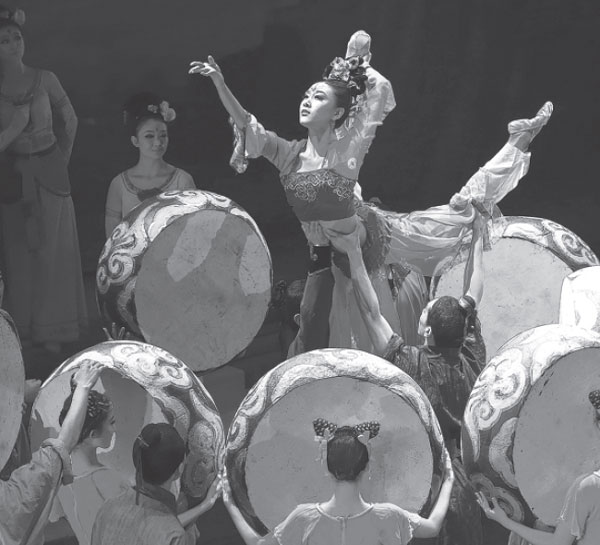Life
Gansu dancers take Silk Road story to Europe
Updated: 2014-01-27By Zhang Chunyan in London ( China Daily USA )
Taking inspiration from the history of the Silk Road and wonderful Dunhuang murals, the Chinese dance drama Silk Road gives European audiences a taste of adventure.
The performance by the China Gansu Dance Troupe tells a touching story of friendship and peace between Chinese people and foreign merchants during the Tang Dynasty (AD 618-907).
Performed by a 47-strong ensemble, this drama merges Chinese classical and modern dance, ancient folk songs and dazzling costumes, portraying the magnificent cultural splendors of a golden age of China.
|
Dancers from the China Gansu Dance Troupe perform in the Chinese classic dance drama Silk Road in London on Jan 11. Xinhua |
From mid- to late January, the dance drama will be performed in London, Paris and Frankfurt.
"The purpose of our European tour is to promote cultural exchange and mutual understanding," says Lu Jinglong, the troupe's director.
The 34-year-old drama follows a painter's daughter who is kidnapped after helping to save the life of a Persian businessman on the Silk Road.
The dance drama's roots are in the murals of Dunhuang Caves - also known as the Mogao Grottoes, Lu says.
Dunhuang, located in Gansu province in western China, was a major stop on the ancient Silk Road. The Mogao Grottoes form a network of 492 temples. The first caves were carved out in AD 366 as places for Buddhist meditation and worship, and more than 800 caves still exist.
In order to make the drama more suitable for European people, Lu says, the story has been streamlined to shorten it. Lu has also fused modern artistic techniques with traditional Chinese dance and music.
The show's European tour is operated by China Arts and Entertainment Group, which represents Chinese performing arts, artists and stage productions for international tours. The professional group promotes Chinese cultural exchanges with other countries, aiming to broaden Chinese arts influence and attract a bigger international audience.
The dance drama is brilliant, says Chris Dam, who brought his 6-year-old daughter to watch it in London's Peacock Theatre. He said the story, the choreography and music are very good, and the contrast of the different elements is clear.
"I think it really important that we have at least one experience like this that's really another culture altogether," Laura Carr says. "Following the story, I feel the sentiments of different characters."
Liu Yun, who works in a Chinese company's London branch, says she was "quite moved" by the performance. "As the Chinese traditional Spring Festival is around the corner, the familiar music and dance even make me a bit homesick."
Silk Road made its debut in 1979 in China and was adapted for film in 1982. It has been performed in more than 30 countries and regions, in 400 cities for more than 4 million people. It also was featured during the 2008 Beijing Olympic Games ceremony.
Gansu Dance Troupe was founded in 1961 by the culture department of China's Gansu province. It focuses on creating and performing Dunhuang music and dance, which bloomed along the Silk Road in ancient China.
zhangchunyan@chinadaily.com.cn
(China Daily USA 01/27/2014 page8)



